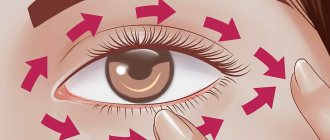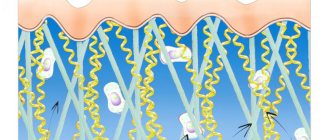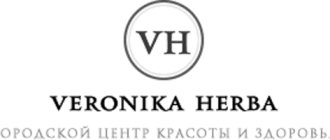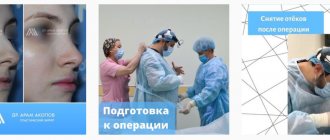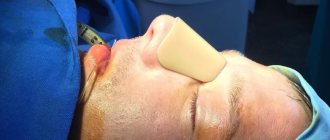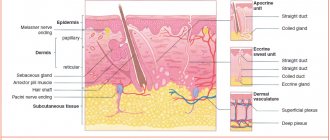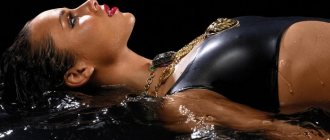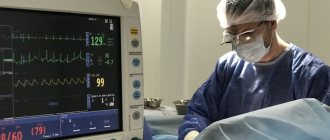Plastic surgery
Surgical intervention in the human body in order to restore the function or shape of a certain tissue or organ, changing the surface of the body is called plastic surgery. The clinic performs operations aimed at improving the aesthetic appearance of various parts of the patients' body. And the second most important function is to eliminate shortcomings or defects of the body.
It turns out that the work of a surgeon has important psychological and aesthetic significance. It is focused on returning adequate self-esteem to a person and the opportunity to feel comfortable. A plastic surgeon is not an ordinary doctor, but a real sculptor of the human body, capable of changing its contours, adding charm and beauty.
Plastic surgery has been known since ancient times. People resorted to its help long before our era. Initially, such operations were carried out in India.
Ancient surgery was very different from modern surgery. There were no competent and effective methods of pain relief, as well as effective antiseptics. Flap methods were used, which today have been replaced by silicone and other convenient implants.
Now plastic surgery is developing at an accelerated pace. Specialists in the field under discussion use modern technologies and scientific achievements in their work. These include endoscopic interventions and lasers.
Plastic surgery helps the fair sex to regain the former beauty of their figure. So, after removal of the mammary glands, a plastic surgeon helps a woman regain the beauty and fullness of her bust.
Modern plastic surgery has many possibilities.
The most popular surgeries are breast enlargement, changing the shape of the nose, and getting rid of excess fat. The process uses either artificial implants made of silicone and other materials, or the patient’s own tissue.
An important section is reconstructive plastic surgery. Its main goal is to restore the lost forms and functions of the body. This includes the restoration of skin in a patient with serious large-scale burns of the face and body and the restoration of part or an entire organ lost as a result of developing oncological pathology.
Cosmetic surgery deals with improving the appearance of the person being operated on. The list includes procedures for removing wrinkles, laser skin resurfacing, and injections of various fillers.
Plastic surgery of the ears, nose, lips, eyelids, chest, cheeks, chin, cheekbones, and eyebrows can be performed.
Modern specialists in the medical field under discussion try to avoid wide skin incisions and deep anesthesia. This has a beneficial effect on the results of the operation and the well-being of patients.
So, with a standard facelift, a wide incision is made and excess tissue is removed. Modern methods of plastic surgery called “endoscopy” make it possible to perform similar actions with minimal trauma to the skin.
The doctor selects the appropriate method after examining the patient immediately before surgery. Every year they become more and more refined and improved.
Rhinoplasty
Rhinoplasty is surgical correction of the shape of the nose. Allows you to eliminate congenital, age-related and post-traumatic defects. Helps solve aesthetic, psychological, and functional problems associated with breathing.
Indications for plastic surgery of the nose:
- hump on the bridge of the nose;
- saddle nose shape;
- thickening of the bridge of the nose;
- lateral curvature of the nose;
- disproportionately large nose;
- irregular shape of the tip - hooked, elongated, drooping, forked, pointed, etc.;
- inharmonious shape of the nostrils and wings of the nose;
- difficulty breathing through the nose;
- the patient’s subjective desire to comply with current canons of beauty.
Nose surgery is contraindicated:
- under the age of 18 (in case of injuries, it is carried out at an earlier age);
- for decompensated cardiovascular diseases;
- severe pathologies of the kidneys and liver;
- diabetes mellitus;
- blood clotting disorders;
- purulent processes in the area of intervention;
- acute conditions;
- oncological diseases;
- mental disorders;
- intolerance to anesthesia.
When it comes to aesthetic rhinoplasty and there is reason to believe that regenerative processes are reduced, the doctor may recommend that patients over 45 years of age limit themselves to conservative methods. If there are no objective aesthetic and functional indications, a consultation with a psychologist is indicated before plastic surgery of the nose.
Types of rhinoplasty
- Closed - when all manipulations are performed inside the nostrils. This technique is used in most cases.
- Open - access through an incision in the bridge of the nostrils (columella) - for volumetric and/or secondary interventions.
- Septoplasty is the straightening of a deviated nasal septum.
Depending on the scope of the intervention, local anesthesia or general anesthesia is administered. Through the nostrils, or through the columella incision, manipulations are performed to excise and reposition soft tissue and/or cartilage. Afterwards, the formed structures are fixed with cosmetic sutures and a bandage. The duration of nose surgery is 1–2 hours.
Rehabilitation
After rhinoplasty, it is normal to develop swelling in the nose and eyes. It goes away in 2-3 weeks - during this time, limit salt in your diet. For 3 days after surgery, drug tamponade of the nostrils is often prescribed, so you have to breathe through your mouth. As a rule, there is no pain. Optionally, it may be recommended to temporarily stop wearing glasses to eliminate the possibility of injuring fragile structures.
To avoid causing nosebleeds, it is recommended to temporarily avoid hot food. You will need to stop smoking for a month after your nose job. Until the tissues are completely healed, avoid physical activity, do not sleep on your side, and laugh, sneeze and cough more carefully. For 2 months, do not visit baths or sunbathe to avoid overheating, do not swim in pools and ponds to eliminate the risk of infection.
The preliminary result of nose surgery is assessed after six months, the final result - after a year.
To consult with a specialist in the field of plastic surgery of the nose, contact our specialist.
Everything you wanted to know about rhinoplasty but were afraid to ask
Nuzhny Viktor Vladimirovich
Plastic surgeon
The nose is the most visible part of the face, and it is its shape and overall appearance that determine how others perceive a person. Many of us are dissatisfied with our nose: some do not like its size or shape, others suffer from a hump or too wide wings, and still others want to correct the tip of the nose that provocatively sticks up or, conversely, droops down. All these problems can be quite easily solved to the delight of patients with the help of one of the most ancient plastic surgeries - rhinoplasty.
Rhinoplasty is an operation to correct (change) the shape or size of the nose, which is aimed at improving its appearance, as well as eliminating problems with nasal breathing and creating a psychologically comfortable state for the patient.
Types of rhinoplasty
There are aesthetic and reconstructive rhinoplasty.
The main goal of aesthetic rhinoplasty is to correct nature’s “mistake” by changing the shape or size of the nose, and thus give the face a more harmonious and attractive appearance. Aesthetic rhinoplasty can be either full or superficial (partial).
Full rhinoplasty is a plastic surgery during which the surgeon affects all structural parts of the so-called external nose: bone tissue, cartilage, and soft tissue. This operation is indicated for patients who want to reduce the length or width of the nose, change the saddle shape, or remove the hump.
Partial (or superficial) rhinoplasty is an operation to correct (change) the shape of the nose, when the surgeon is limited to treating only some external areas of the nose, without affecting the bone tissue. Partial rhinoplasty is performed if it is necessary to correct the tip of the nose or reduce the wings, although complete rhinoplasty may be necessary to eliminate such problems - this is decided by the doctor after examination and conversation with the patient.
Reconstructive rhinoplasty is aimed, first of all, at solving such a problem as eliminating breathing difficulties due to a deviated nasal septum or hypertrophy of the nasal turbinates. Reconstructive rhinoplasty involves restoring the appearance of a nose that has been damaged (for example, “moved to one side” due to a fracture), or partially or completely lost due to injury. This type of operation is used if it is necessary to correct a congenital deformity of the osteochondral skeleton in the nasal area. Sometimes a plastic surgeon has to literally “sculpt” a new nose, using ear cartilage or rib cartilage (in especially severe cases), as well as artificial materials.
Often the patient has to undergo surgery not so much for cosmetic and aesthetic purposes, but specifically to restore normal breathing, which was disrupted due to a deformation of the nasal septum received during an injury. As a rule, post-traumatic surgery includes rhinoplasty and septoplasty (an operation aimed at correcting the nasal septum, its main goal is to restore normal nasal breathing).
Preparation for rhinoplasty surgery
Before deciding to undergo surgery, the patient and the plastic surgeon discuss the future parameters and appearance of the nose, find out what exactly the patient wants to achieve, and the final result is simulated using a computer. This approach helps to “try on” the new nose to the patient’s face before surgery and make sure that its new appearance will not disturb the overall proportions of the face, and the shape of the nose will be harmoniously combined with all facial features.
It should also be taken into account that rhinoplasty is not performed if the patient has not reached 17-18 years of age. This is due to the growth of the body and the formation of cartilage and bone skeleton; the consequences of rhinoplasty at an earlier age can be unpredictable. But it is preferable to resort to rhinoplasty no earlier than 21 years old - doctors say that it is by this age that the bone skeleton is completely formed.
Features of nose correction surgery
Rhinoplasty is recognized as one of the most difficult plastic surgeries: it is important not only to change the nose and give it the desired size or shape, but also not to disturb nasal breathing. Therefore, such an operation should only be performed by an experienced specialist who has already proven himself and has good reviews from patients.
Rhinoplasty can be performed using both open and closed approaches. Open access involves a skin incision from the outside, which in the end will be almost invisible. With a closed approach, surgical intervention is performed from the nasal mucosa (through the nostrils) without any external incisions and leaves no traces at all. Closed rhinoplasty is considered more complex and requires special skill of the plastic surgeon.
The type of access is determined directly during the consultation and depends on many factors: the shape of the nose, the characteristics of its structure and the desired end result. Surgery to correct the size or shape of the nose is performed under local anesthesia or general anesthesia: the choice of anesthesia is influenced by the complexity of the surgical intervention and the duration of the intended operation . In any case, the patient is completely relieved of pain and does not feel any discomfort.
Postoperative period
Rhinoplasty is a serious surgical intervention that requires not only the professional approach of the doctor, but also the responsibility of the patient himself during the rehabilitation period. The postoperative period is painless. Only in the first few days, tampons cause some inconvenience for the patient, as they make nasal breathing difficult.
A fixing plaster bandage is applied to the nose, which is removed from time to time to care for the skin; in general, wearing such a bandage is mandatory for 7 to 10 days. During this time, the primary swelling usually goes away, as well as bruising and puffiness under the eyes. Residual subcutaneous compaction, almost invisible to others, disappears completely within 6-8 months. It is after this time that the final result of rhinoplasty will be visible.
As a rule, the patient is discharged the next day after the operation, but he still remains under the supervision of a doctor, coming to the clinic for examinations and dressings. The process of general recovery after rhinoplasty surgery takes about a month, during which the patient is instructed to wear a special bandage in the nose area, as well as limit physical activity and eliminate bad habits (smoking, drinking alcohol).
A patient who has undergone rhinoplasty must undergo mandatory examinations with a plastic surgeon 3, 6 and 12 months after surgery.
Contraindications for rhinoplasty
An experienced plastic surgeon will refuse to perform surgery if the patient has a history of the following diseases:
— diseases of the cardiovascular system;
- blood clotting disorders;
— chronic liver and kidney diseases in the acute stage;
- oncological diseases;
- infectious diseases;
- mental illness.
Of course, rhinoplasty is a serious step in the life of a person who dreams of changing his nose, and at the same time his life. But many of us understand perfectly well: if any – even significant – figure flaws can be “disguised” or even turned into advantages with the help of clothing, then an ugly nose is the first thing that others pay attention to when looking at a person’s face. And if this very nose is too big or humpbacked, then there is no way to hide such a “spectacle”; it will always spoil your appearance and mood. Therefore, sometimes you need to decide on surgical intervention and correct the shape or size of your nose, rather than suffer for the rest of your life, sighing every time you look at yourself in the mirror.


